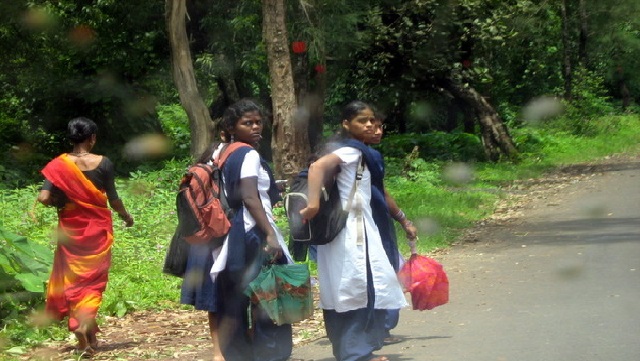Thanks to the efforts like the Sarva Shiksha Abhiyaan and the Anganwadi system, more of village girls are going to schools.
As general elections are approaching and the poll campaign gets louder, the UPA and NDA parties are on the roads and making points to bring each other down. The BJP brags that it created more jobs in its five years term than the UPA managed to create in their two terms between 2004 and 2013.
This is true- between 1990-2000 and 2004-05 when the BJP-led NDA government was in power, the total number of jobs went up by around 60 million. Between 2004-05 and 2009-10, the rise was trivial 2.76 million. The difference looks tragic, but some of this tragedy is based on a statistical error.
Since nobody has the time and resources to run around and ask 1.2 billion Indians what they do for livelihood, economy-wide job numbers are collected after sampling a moderately larger number of people – around 4,57,000 – and then analysing what they do on behalf of the entire populace. Population numbers are calculated by the censuses, where every Indian is counted but sadly, the census takes place once every 10 years.
So, we know what India’s populace was in 2001 and 2011, two census years. But between 2001 and 2011, the government estimated what it believed is the standard population growth rate and added that to the next year, to get a ballpark figure of the population. Well, that estimation of the populace was incorrect.
India’s population in 2011 was miscalculated by a more than 18 million. That’s somewhat more than all the individuals in the Netherlands.
The lesser the population numbers, the lesser will be the number of jobs anticipated on to it. Reportedly, On July 27, the Economic and Political Weekly (EPW) showed that with right population numbers, the 2009-10 job numbers would really go up by more than four million. The UPA-1, hence, added around seven million jobs in its term, not the less than three million number assessed earlier.
Away from boring TV debates and discussions, the question is what’s sourcing the gloom in the job market? Numbers show a fascinating thing- with time, more and more Indians women are quitting jobs. Is this the consequence of prejudice, or is it for the reason that more and more girls who would have started working, are choosing to go for further studies instead?
According to EPW, the reasons are a bit of both. With women streaming in and out of offices, you may wonder that the ratio of urban working women would have increased in the last 40 years. But the scene is not as it appears. In cities, the ratio of working women has in reality decreased to around 13 percent in 2011-12. And in contrast, the ratio of working women in villages has shrivelled from 32 percent to 18 percent.
In families, those are landless or have small shards of land, in those houses between 40 percent and 19 percent of women work. Only 3.3 percent of women work in families that have more than 4 hectares of land. So, the better off a family is, the better one can afford the chauvinism of caste and patriarchy that scowl on working women.
But there is a hugely positive side too, for which the Congress can claim all glory. Thanks to the endeavours like the Sarva Shiksha Abhiyaan (Education for All Movement) and the Anganwadi system, more of village girls are going to school and choosing to study for longer years.
Reportedly, in 1983, around 29 percent of village girls aged between 5 and 15 years went to school. As soon as they turned 16, this figure dropped severely to 4 percent. Only 0.6 percent of village women sustained into colleges and higher studies in the age group of 21 and 25.
By 2009-10, with the start of UPA-2 in officer, these numbers rose higher. That year, 85 percent of village girls in the age group of 5-15 years went to primary school, 35 percent attended higher school and around 4 percent between the ages of 21-25 years joined higher studies.
This is a remarkable accomplishment, one that India can swank of to the world, but that, oddly, has fallen below the radar of public discussion. That’s not all. A study reveals that this near-universal schooling for village girls cuts across all earnings groups.
In 1983, 38 percent of the girls from the better off families and only 9.2 percent of the under privileged families went to primary school. In 2009-10, more than 63 percent of wealthier village girls attended school. And even from families that were under-privileged, tenth of the village population, an amazing 52 percent of girls attended primary school. Most of this must have been made achievable by the rural income that the MNREGA helped to gain.
Today, I can’t imagine about the historic social, financial and institutional changes that this group of educated young ladies will bring in India in the coming years.





